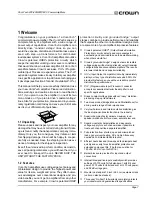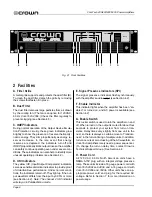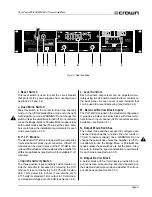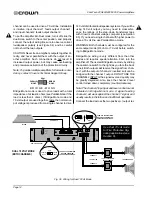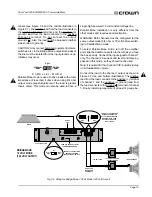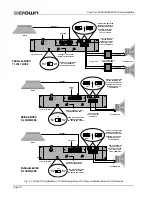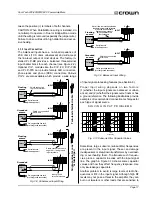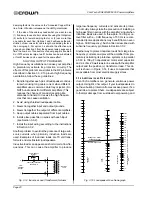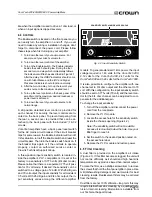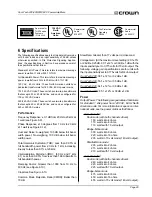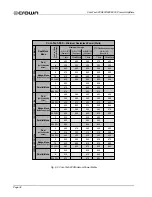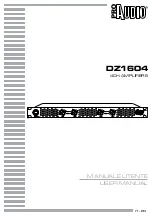
Page 21
Com-Tech 200/400/800/1600 Power Amplifiers
mechanical damage from large transient voltages. In
both cases, special fuses may be used to protect your
loudspeakers, or you may opt for the convenience of a
P.I.P. module that provides loudspeaker protection.
Two different types of fuses are required for thermal
protection and voltage protection. Slow-blow fuses are
usually selected to protect loudspeakers from thermal
damage because they are similar to loudspeakers in
the way they respond to thermal conditions over time.
In contrast, high-speed instrument fuses like the
Littlefuse 361000 series are used to protect loud-
speakers from large transient voltages. The nomo-
graph in Figure 3.15 can be used to select the properly
rated fuse for either type of loudspeaker protection.
There are mainly two different approaches used when
installing fuses for loudspeaker protection. A common
practice is to put a single fuse in series with the output
of each channel. This makes installation easy because
there is only one fuse per channel to install, but it can
also lead to problems. The biggest disadvantage be-
comes apparent if the fuse blows because power to all
connected loads will be removed.
A better approach is to fuse each driver indepen-
dently. This allows you to apply the most appropriate
protection for the type of driver being used. In general,
low-frequency drivers (woofers) are most susceptible
to thermal damage and high-frequency drivers (tweet-
ers) are usually damaged by large transient voltages.
This means that your loudspeakers will tend to have
better protection when the woofers are protected by
slow-blow fuses and high-frequency drivers are pro-
tected by high-speed instrument fuses.
Depending on the application, you may want to use a
P.I.P. module to protect your loudspeakers. When
properly configured, all
P.I.P. modules with signal-
driven compression can provide loudspeaker protec-
tion. Some of the
P.I.P. modules with signal-driven
compression include the P.I.P.-AMCb, P.I.P.-EDCb
and P.I.P.-PA. While the P.I.P.-EDCb is most commonly
used for general loudspeaker protection, the P.I.P.-
AMCb is very popular in systems that require a high-
quality crossover, and the P.I.P.-PA is the processor of
choice for applications that require a microphone and
line level input for each channel. For more information
on
P.I.P. modules, see Section 8.
3.4 AC Mains Power
All 120 VAC, 60 Hz North American units have a NEMA
5-15 AC plug with an integral voltage presence lamp.
These units include a 16 gauge cord with
Com-Tech
200s and 400s, and a 14 gauge cord with Com-Tech
800s and 1600s. Other Com-Tech amplifiers are fur-
nished with an appropriate AC cord and plug.
Use an isolated wall outlet whenever possible with the
correct voltage and adequate current. Voltages
greater than 10% above the specified AC mains volt-
age for the amplifier may damage the ±15 volt regula-
tor, filter capacitors and output transistors. See Section
7 for power requirements under various conditions.
All specifications in this manual were measured using
120 VAC, 60 Hz power mains unless otherwise noted.
Specifications are derived using a mains voltage that
is accurate to within 0.5% with THD less than 1.0% un-
der all testing conditions. Performance variations can
occur at other AC voltages and line frequencies. In ad-
dition, line regulation problems will directly affect the
output power available from the amplifier.

